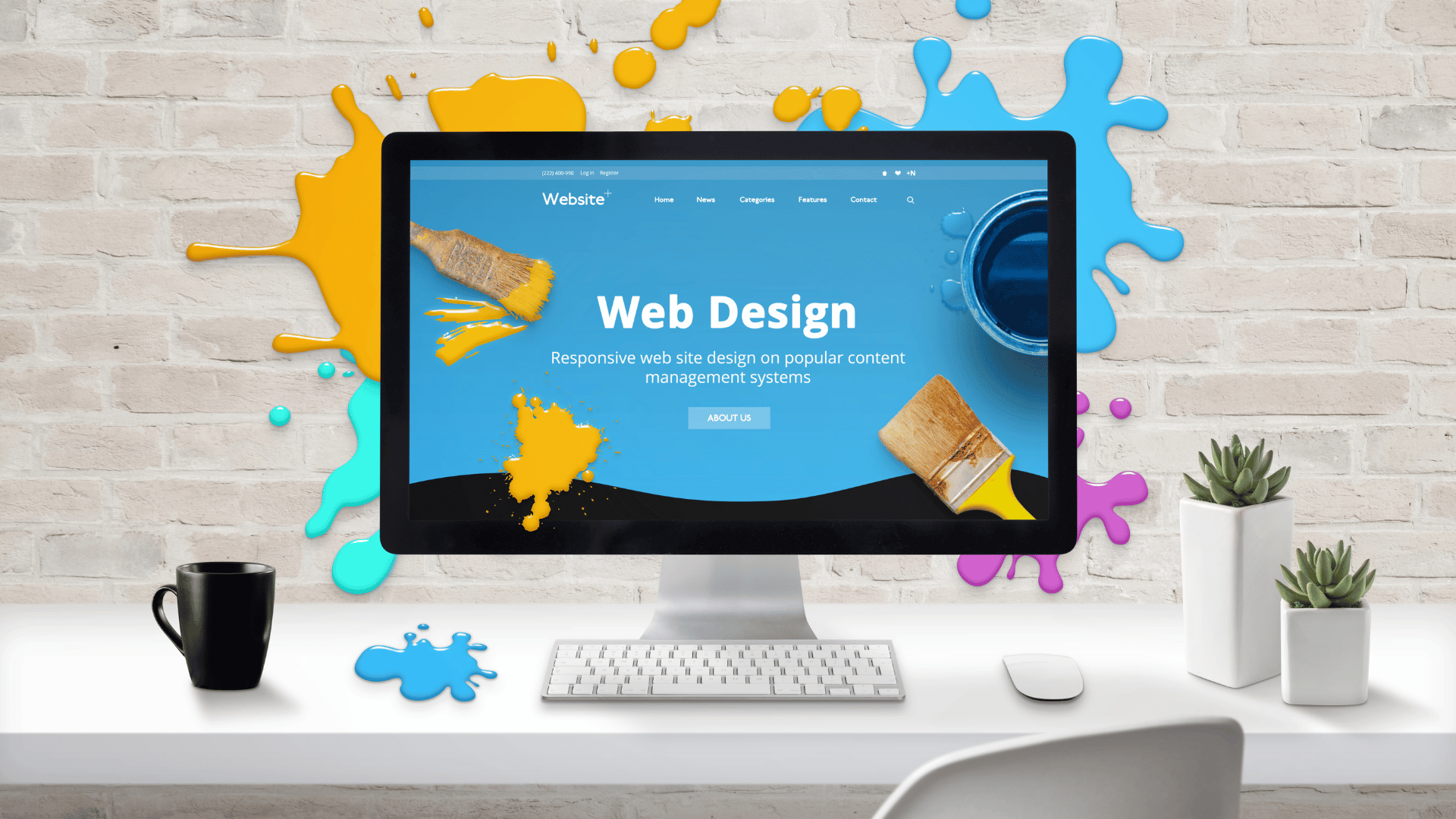The Value of User Experience in Reliable Web Design Approaches
User experience (UX) acts as a keystone in reliable web design methods. It shapes just how customers engage with a site, influencing their satisfaction and probability of returning. A properly designed UX can boost engagement with instinctive navigation and receptive formats. Nonetheless, forgeting these facets may bring about irritation and increased bounce prices. Comprehending the ins and outs of UX is vital for designers intending to create engaging digital experiences that resonate with diverse audiences. What aspects genuinely drive successful user involvement?
Comprehending User Experience and Its Effect on Design
Although user experience (UX) is usually regarded as a simple aspect of web design, it basically forms just how customers interact with a site. UX includes all elements of the user's interaction, consisting of use, availability, and total fulfillment. A favorable UX promotes engagement, motivating customers to discover the website and return in the future. Conversely, an unfavorable experience can bring about stress, resulting in high bounce rates and lost possibilities for conversion.
Layout aspects like material, navigating, and design organization play crucial duties in shaping this experience. Reliable UX style expects user needs and choices, guaranteeing that details is aesthetically enticing and conveniently obtainable. Furthermore, comprehending user actions with analytics can offer useful understandings, educating style choices that boost functionality. Eventually, a comprehensive understanding of UX permits developers to produce web sites that not only bring in individuals however also advertise meaningful communications that align with organization objectives and user assumptions.
Secret Concepts of Effective User Experience
Efficient user experience hinges on numerous key principles that boost site capability and engagement. Intuitive navigation design, receptive layout essentials, and the significance of aesthetic power structure are essential aspects that contribute to a seamless interaction in between individuals and internet material. Understanding these concepts allows developers to create more straightforward and easily accessible electronic settings.
Instinctive Navigating Layout
When individuals come across an internet site, instinctive navigating layout acts as a crucial portal to their overall experience. Reliable navigating enables customers to easily situate the information they seek, improving their communication with the website. Key principles include clear labeling, logical organization, and regular placement of navigating elements. Tags should be simple, enabling individuals to forecast the material they will certainly discover. A well-structured pecking order aids users comprehend the relationship between different sections, directing them with the web site flawlessly. Additionally, responsive food selections and easily accessible web links add to a fluid experience throughout devices. By focusing on instinctive navigating, developers can greatly decrease user irritation and boost engagement, ultimately cultivating a favorable perception of the site and its material.
Responsive Layout Fundamentals
A well-structured navigation system naturally leads to the demand for a receptive format, which is vital in today's diverse digital landscape. A receptive layout guarantees that websites feature perfectly across numerous gadgets, including mobile phones, tablets, and desktop computers. This flexibility improves user experience by allowing material to be conveniently obtainable and aesthetically coherent, despite display size. Secret principles of receptive layout include fluid grids, flexible pictures, and media queries, which assist in suitable viewing. In addition, focusing on touch-friendly elements improves communication on smart phones. By carrying out a responsive format, designers can accommodate individuals' requirements, decrease bounce rates, and rise involvement. Inevitably, a well-executed receptive style fosters a favorable user experience, encouraging visitors to discover the internet site additionally.
Visual Power Structure Importance
Aesthetic power structure plays an essential function in guiding users via a web site, making certain that important info records their focus. By strategically using dimension, spacing, contrast, and shade, designers can create a clear path for individuals to adhere to. Bigger aspects typically draw the eye, suggesting their value, while contrasting shades can highlight contact us to action. Additionally, consistent alignment and grouping of relevant material boost comprehension, making navigating instinctive. Reliable use aesthetic pecking order not only improves usability but likewise sustains the total visual of the site, cultivating a favorable user experience. When users can easily determine the most important details, they are more probable to involve with the web content, bring about enhanced satisfaction and communication with the internet site.
The Duty of Functionality in Web Design
Usability plays an important duty in web design, specifically via navigating simplicity and adherence to ease of access standards. Effective navigating enhances user fulfillment by allowing site visitors to locate details swiftly and with ease. At the same time, meeting accessibility standards guarantees that all individuals, no matter their capabilities, can efficiently communicate with the web site.
Navigating Simplicity
Simplicity in navigating stands as a foundation of reliable web design, considerably influencing user experience. A streamlined navigating system permits users to discover details swiftly and intuitively, minimizing frustration and improving fulfillment. Clear labeling and logical pop over to this site framework are important aspects, leading users easily with the web site. Repetitive links or extremely complex menus can disorient users, leading to increased bounce rates. Furthermore, mobile responsiveness should be thought about, making sure navigation remains simple across devices. Decreasing and focusing on essential web pages mess additionally sustains user involvement. Efficient navigation not only promotes a favorable experience but likewise encourages customers to discover the website better, eventually leading to greater conversion prices. In this regard, navigating simpleness acts as a critical consider the general performance of web design techniques.
Availability Standards
User engagement is substantially boosted when sites adhere to availability criteria, making certain that all users, despite their capacities, can navigate and interact effectively. Compliance with these standards not only broadens the audience but additionally improves overall user complete satisfaction. Easily accessible design integrates features such as message options for pictures, key-board navigating, and enough shade contrast, which facilitate usage by individuals with disabilities. Additionally, applying these standards can favorably affect seo (SEARCH ENGINE OPTIMIZATION) by boosting site framework and clearness. As web design develops, prioritizing access becomes crucial in fostering a comprehensive digital atmosphere. By welcoming these criteria, designers add to a more equitable net, ultimately driving user loyalty and engagement.
Relevance of Responsive Design for User Interaction
As consumers increasingly access sites through a selection of gadgets, the value of responsive design becomes vital for involving users properly. Responsive design warranties that a site adapts seamlessly to different screen sizes, offering an excellent watching experience no matter the tool made use of. This flexibility boosts user involvement by promoting much easier navigating and interaction with material.
When individuals experience a website that is responsive, they are more probable to remain longer, check out even more, and return in the future. A well-designed receptive design decreases the aggravation frequently connected with scrolling and zooming on smaller displays, therefore minimizing bounce prices. Additionally, receptive style can positively impact search engine rankings, as internet Find Out More search engine prioritize mobile-friendly internet sites. In today's electronic landscape, where mobile use continues to rise, applying receptive style is not just valuable, but essential for keeping user interaction and assuring a positive experience across all tools.
Enhancing Load Times for Better User Contentment

To boost tons times, web designers should focus on optimizing photos, leveraging internet browser caching, and reducing HTTP requests. In addition, using Content Shipment Networks (CDNs) can quicken content shipment by distributing it throughout numerous geographical places. Enhancing code, such as compressing CSS and JavaScript data, better adds to quicker loading speeds.
Eventually, a commitment to boosting load times not just enhances user fulfillment however also enhances brand name commitment and improves the possibility of repeat brows through. A swift, seamless experience is necessary for maintaining users and fostering favorable communications.
The Influence of Visual Pecking Order on User Interaction
Visual hierarchy acts as an essential element in guiding user communication on a website. By arranging material in a manner that prioritizes information visually, developers can influence just how customers engage and browse with a website. This power structure is developed through different style strategies, consisting of dimension, shade, contrast, and spacing. Larger fonts or strong shades draw interest to crucial aspects, such as telephone calls to activity or headings, while restrained shades and smaller typefaces can show secondary information.
Reliable visual power structure helps customers promptly identify what is crucial, minimizing cognitive tons and enhancing usability. It permits instinctive navigating, making it easier for users to discover what they require without irritation. As users interact with a website, a well-structured aesthetic power structure fosters an extra enjoyable experience, inevitably bring about higher involvement and conversion prices. Developers should focus on these concepts to produce an user-centered and reliable web environment.
Measuring User Experience: Tools and Strategies

Frequently Asked Concerns
Exactly How Can I Improve My Internet site's User Experience on a Budget plan?
To boost a site's user experience on a budget, one can enhance page load rate, streamline navigation, carry out responsive style, enhance content quality, and gather user comments for constant improvements, guaranteeing a rewarding site visitor experience.
What Prevail User Experience Errors to Prevent in Web Design?
Typical user experience mistakes in web design consist of messy layouts, bad navigation, slow loading times, lack of mobile responsiveness, neglecting access, irregular branding, and stopping working to focus on user feedback - Website Design Agency. Each can substantially prevent overall website performance
Just how Usually Should I Update My Site for Better User Experience?
Sites must be upgraded routinely, ideally every few months, to preserve suitable user experience. Constant updates help address usability issues, freshen material, and adjust to changing user demands, making sure the website stays appropriate and appealing.

Can User Experience Influence SEO Rankings on My Internet site?
User experience can significantly impact SEO rankings, as search engines focus on web sites that offer smooth navigation, fast packing times, and engaging material. A favorable user experience can result in reduced bounce rates and higher search exposure.
What Duty Does Availability Play in User Experience Style?
Ease of access plays an important role in user experience style by making certain that all people, no matter abilities, can connect and browse with a web site effectively. This inclusivity enhances overall fulfillment and involvement among varied individuals.
User experience (UX) is often regarded as a plain aspect of internet style, it fundamentally forms just how customers connect with a web site. User involvement is significantly boosted when web sites adhere to accessibility criteria, ensuring that all customers, no matter of their capacities, can navigate and interact properly. Determining user experience (UX) is vital for understanding how effectively a site meets the needs of its individuals. Furthermore, functionality screening, where actual users browse the site while observers note difficulties, provides straight feedback on user experience. Usual user experience blunders in web layout include cluttered designs, inadequate navigating, slow filling times, absence of mobile responsiveness, ignoring availability, irregular branding, and failing to focus on user responses.